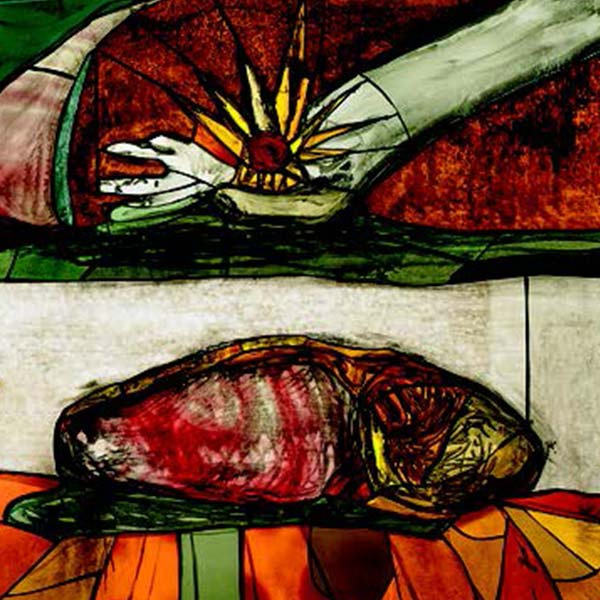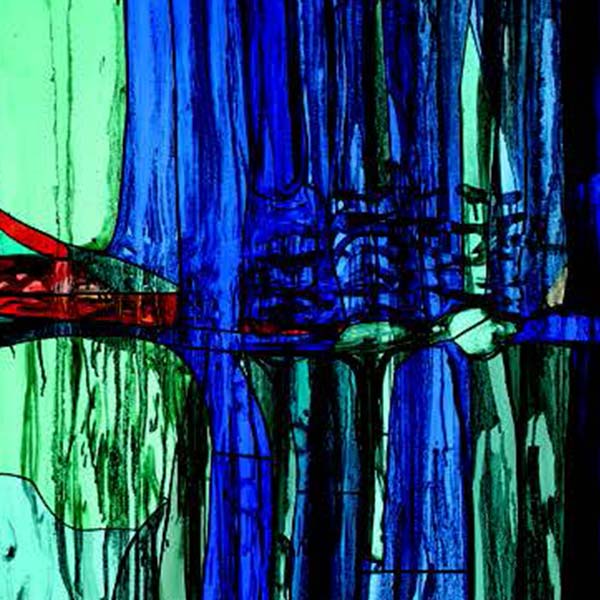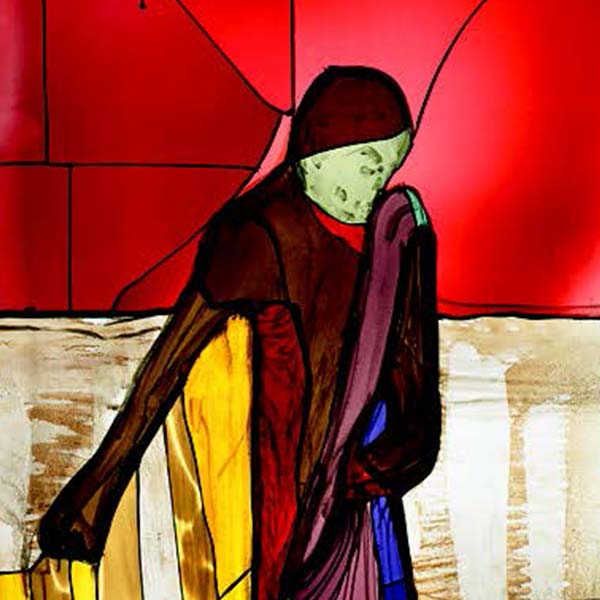Section 4
Northern Wing
The northern wing of the chapel stands as a counterpart to the southern wing, depicting Christ’s supper at Emmaus, the baptism of Jesus and the Parable of the Sower.
Supper at Emmaus
Closest to the right of the stage is a series of three stained-glass windows illustrating the story of Jesus in Emmaus, breaking bread in the presence of two disciples who at first do not recognize their resurrected Christ (Luke 24:28-32). In the top window, you see a loaf lying on the table and the hand of Christ, showing his wound from the cross. It is precisely as Christ breaks bread with his disciples that his identity is revealed to them. The long window to the right of the door shows the two disciples bowing their heads in respect, when they realize that the stranger is their Christ. Finally, the multiple figures on the door portray Christ disappearing as soon as the disciples realized who he was.
Baptism
Looking to the right of the Supper at Emmaus windows, you see a large blue window — a window representing water, baptism and the promise of new life. This window, standing in contrast to the large red stained-glass pane opposite it in the southern wing of the chapel, depicts the baptism of Jesus (Matthew 3:13-17). The contrast presented here emphasizes the truth that we come from nothing, from death — and that through baptism, we enter into new life.
Christ as the Sowing Farmer
The following grouping of three windows illustrates the theme of Christ as the sowing farmer (Matthew 13:3-8). Through the planting of wheat, which represents the bread of life, Christ sows new life. All of the windows feature different colors, but the three basic colors (yellow, red and blue) are predominant. The complementary colors green, orange and violet are also used. These are the colors of the rainbow, and the heavenly Jerusalem has traditionally been painted with the colors of the rainbow as an element essential for its portrayal. The “sower” depicted in the windows is surrounded by the colors of the seeds — the color of the light, the color yellow. In one pane, however, the sky is blood-red. This light comes from the crucifixion and features the color of the blood and the wine, as well as of the bread and the body. This also relates to the communion meal that we see in the opposite windows depicting the Supper at Emmaus. The one hand of the Emmaus window bears the wound from the crucifixion, and the hand of the sowing man carries the seed — all emphasizing the transition from death to life.
 Biola University
Biola University





